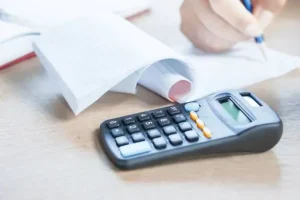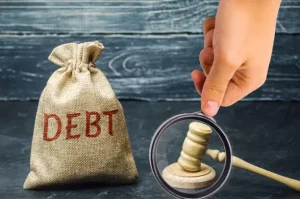Are you dealing with unpaid invoices from clients and wondering how to recover your money effectively? Do you want to maintain professional relationships while ensuring timely payments? Collecting client debts is a critical process for businesses to sustain cash flow and financial health. In this article, we answer key questions like “What are the first steps in debt collection?” and “How do I handle difficult clients?” with detailed insights, practical steps, benefits, challenges, and tips supported by bullet points for deeper understanding, helping you take informed actions and connect with professional services for customized support.
What Is Client Debt Collection and Why Is It Important?
Client debt collection refers to the methods businesses use to recover unpaid amounts from clients for goods or services provided. If you’re asking about its definition, it involves a series of steps from reminders to legal action, governed by laws like fair debt collection practices to ensure ethical recovery. This process is vital for maintaining liquidity, as unpaid debts can strain operations, delay payments to suppliers, and hinder growth, especially for small and medium enterprises relying on steady cash inflows.
- Key Components: Includes initial reminders, negotiations, and escalation to agencies or courts.
- Legal Framework: Adheres to regulations preventing harassment while protecting creditor rights.
- Business Impact: Prevents financial shortfalls and supports sustainable operations.
- Common Scenarios: Applies to overdue invoices from services, products, or contracts.
First Steps in Collecting Client Debts
Start with internal efforts before escalating. If you’re wondering where to begin, review your records to confirm the debt, then send a polite reminder letter or email outlining the amount due, original invoice date, and a new payment deadline. This approach often resolves issues amicably, preserving client relationships while asserting your rights.
- Review Records: Verify invoice details, payment terms, and any prior communications.
- Send Reminders: Use email or mail with clear due dates and contact information.
- Follow Up Calls: Politely discuss the issue to understand delays.
- Document Everything: Keep records of all interactions for potential escalation.
Effective Communication Strategies for Debt Collection
Communication is key to successful collection without damaging relationships. If you’re asking how to communicate effectively, use professional, empathetic language in calls or letters, focusing on facts and offering solutions like payment plans. This encourages cooperation and reduces resistance.
- Empathetic Approach: Acknowledge client challenges while emphasizing obligations.
- Clear Messages: Specify amounts, deadlines, and consequences of non-payment.
- Multiple Channels: Combine emails, calls, and letters for better reach.
- Timing: Send reminders shortly after due dates to prompt action.
Negotiating Payment Plans with Clients
Negotiation can turn a delinquent account into a paying one. If you’re curious about setting up plans, propose flexible options like installment payments based on the client’s situation, ensuring agreements are documented in writing with clear terms to avoid misunderstandings.
- Assess Client Situation: Understand their financial constraints for realistic plans.
- Document Agreements: Use written contracts outlining schedules and penalties.
- Monitor Compliance: Track payments and follow up on missed installments.
- Offer Incentives: Provide discounts for early or lump-sum payments.
When to Use Debt Collection Agencies
Turn to agencies when internal efforts fail. If you’re wondering about timing, engage them for persistent non-payers, as they have expertise in recovery, often working on a contingency basis where they only charge if successful, saving your resources.
- Selection Criteria: Choose licensed agencies with industry experience.
- Process Overview: Agencies handle communications, negotiations, and reporting.
- Benefits: Higher recovery rates and legal compliance.
- Costs: Typically a percentage of recovered amounts.
Legal Options for Collecting Client Debts
Legal action is a last resort for uncooperative clients. If you’re asking about procedures, start with a demand letter, then file a small claims or civil suit depending on the amount, involving court judgments that allow asset seizures or wage garnishment.
- Demand Letters: Formal notices threatening legal action.
- Court Filings: Prepare claims with evidence like invoices and contracts.
- Judgments: Enforce through liens or collections.
- Post-Judgment: Use enforcement tools like bank levies.
Handling Difficult or Non-Responsive Clients
Difficult clients require patience and strategy. If you’re wondering how to manage them, maintain professionalism, document all attempts, and escalate to agencies or legal steps if needed, while exploring reasons for non-payment to find resolutions.
- Professionalism: Avoid emotional responses in interactions.
- Documentation: Record calls and correspondence for evidence.
- Escalation: Involve third parties when direct efforts fail.
- Root Causes: Investigate issues like disputes over services.
Preventing Future Client Debts
Prevention is better than collection. If you’re asking how to avoid debts, implement strict credit policies, require deposits, and use contracts with clear terms to minimize risks from the start.
- Credit Checks: Screen clients before extending credit.
- Deposits: Require upfront payments for large orders.
- Contracts: Include penalty clauses for late payments.
- Monitoring: Regularly review accounts receivable.
Common Mistakes in Debt Collection and How to Avoid Them
Avoid mistakes like ignoring legal guidelines or being too aggressive. If you’re wondering about pitfalls, always comply with laws, communicate clearly, and document everything to prevent disputes or legal backlash.
- Non-Compliance: Follow fair collection laws to avoid fines.
- Aggressive Tactics: Use respectful language to preserve relationships.
- Poor Documentation: Keep detailed records of all efforts.
- Delaying Action: Act promptly on overdue accounts.
Measuring Success in Debt Collection Efforts
Success is measured by recovery rates and time taken. If you’re asking how to evaluate, track recovered amounts, average collection periods, and client retention to refine your strategies.
- Recovery Metrics: Monitor percentages of debts collected.
- Time Tracking: Calculate average days to collect.
- Client Retention: Assess if relationships are maintained.
- Feedback: Gather input from team on process improvements.
Next Steps: Start Collecting Your Client Debts Effectively
If you’re ready to recover your debts, review your outstanding invoices and implement these strategies. Contact professional services for a free consultation to tailor a plan for your business.
- Invoice Review: Identify overdue accounts.
- Strategy Implementation: Apply reminders and negotiations.
- Professional Help: Engage agencies or lawyers as needed.
Are You Prepared to Collect Your Client Debts?
Collecting client debts is essential for business sustainability. Reach out today for expert support and begin securing your financial future with confidence.





